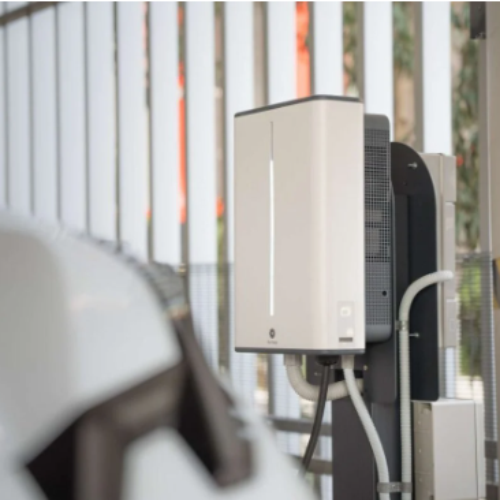Ofgem’s approach to licensing and monitoring increased the risk of supplier failures, a new report from the National Audit Office (NAO) has found.
In an effort to encourage new entrants into the market, the regulator took a ‘low bar’ approach to licensing new suppliers, which saw it fail to scrutinise their financial position when they applied for a license or joined the market.
Whilst it did begin to tighten the rules to improve supplier financial resilience in 2018, and in 2019 introduced new assessments for supplier license applicants, it did not actually implement changes to address the risk related to existing supplier till 2021.
By this point, many of the suppliers in the market lacked the resilience to manage the surging wholesale power prices. Between February and December 2021, the wholesale price of gas increased nearly six-fold, and had a knock-on impact on electricity prices.
A report commissioned by Ofgem found that many of the new suppliers in the market had adopted business models that left them heavily exposed to volatility. For example, some suppliers were operating with lower liquidity levels than their peers.
The price cap was introduced by the Department of Business, Energy and Industrial Strategy (BEIS) in 2019 with the aim of ensuring customers pay a fair price for their energy. Ofgem however did not consider the impact of the cap when there is a sustained period of prices increases in the wholesale energy market, the NAO found.
Suppliers were squeezed between surging wholesale costs and the inability to recoup these costs due to the price cap making them unable to charge their customers more. In April, the price cap jumped by 54% to £1,971 per year – an increase of 78% since it was introduced in 2019, with predictions it will increase again to as much as £3,000 for the winter period – to better reflect wholesale power prices. However, between September 2021 and April, 28 suppliers had already collapsed.
Ofgem had undertaken some modelling of the potential impact of the price cap on supplier resilience, but hadn’t stress-tested the design in depth. Additionally, it had not considered how the price cap might interact with the Supplier of Last Resort (SoLR) process, said the NAO.
BEIS has now announced plans to extend the price cap – which helped cushion the impact of high wholesale prices over the last winter in particular for customers – but is yet to evaluate the costs and the benefits for consumers, or consider alternative forms of price cap, the watchdog noted.
“By allowing so many suppliers with weak finances to enter the market, and by failing to imagine that there could be a long period of volatility in energy prices, Ofgem allowed a market to develop that was vulnerable to large-scale shocks,” Gareth Davies, the head of the NAO, said.
“Consumers have borne the brunt of supplier failures at a time when many households are already under significant financial strain having seen their bills go up to record levels. A supplier market must be developed that truly works for consumers.”
Ofgem is currently working to tighten the rules for suppliers to ensure they are more financially resilient. This includes introducing financial stress tests for suppliers to prove their resiliency in December 2021.
Earlier this week, the regulator also set out proposals to protect customer balances, stating that suppliers had been using them as “an interest free company credit card.”
Additionally, it is looking to gain further resources from HM Treasury and new powers to enable it to take a more proactive approach to monitoring and responding to issues of financial resilience.
However, Ofgem must be cautious not to hinder effective competition whilst tightening rules. Its ‘low bar’ approach – whilst meaning some suppliers were vulnerable to external shocks – did allow new suppliers to enter the market including some with innovative products that supported the reduction of energy consumption or the use flexible energy, said NAO. The new entrants also created greater competition on the price of bills.
As such, the NAO recommends that BEIS and Ofgem establish a process for considering how new interventions in the retail market could react to a range of scenarios. Whilst the regulator should also define a set of objectives for its regulation around price, stability and innovation, which it should review and report at least annually.
The report also showed that the majority of customers of failed suppliers faced no disruption to their supply thanks to the SoLR and Special Administration Regime (SAR) mechanisms.
There have now been nearly 2.4 million customers transferred through the SoLR process, with Citizens Advise estimating the transfer cost the average customer £30 more per month for the length of their original contract as many were moved onto a higher tariff. Customers additionally faced challenges around the loss of debt repayment plans, an aspect that particularly hit vulnerable households.
Currently, Ofgem estimates that supplier failures will cost £2.7 billion through the SoLR process, as well as covering the cost of missed Renewable Obligation payments by failed suppliers.
The biggest component of this cost is suppliers having to buy wholesale energy above the level for the price cap for new customers gained from suppliers that had failed. This was emphasised by Octopus Energy in calls for more stringent protection of customers this week, as the supplier highlighting the lack of hedging was a significant contributor to high power prices accounting for for 85% of the cost of failures.
Once new customers are taken on by a supplier, the cost of buying additional power to cover their demand at higher prices in the spot market are distributed across all energy bills rather than just the customers of failed suppliers. This makes up the bulk of the £94 per customer added to bills by the taking on customers of failed suppliers.
The cost of energy suppliers exiting the market is very uncertain, noted the NAO, and could go down or up from Ofgem’s current estimate. It is likely to have been offset to some extent by some households having cheaper bills in previous years because new entrants increased competition as well.
BEIS had prepared for a large supplier to collapse, placing Bulb into the SAR when it folded to protect its 1.7 million customers. In 2021-22, the government has spent £0.9 bullion on an administrator to run the supplier and has budgeted £1 billion to run it during 2022-23.
Until a buyer for Bulb is found, it will be unclear what the overall cost of supporting the supplier has been. Reports emerged last week that Octopus Energy is considering acquiring the supplier, potentially joining Centrica and Masdar who are allegedly in talks about the possibility of taking on the company.
The full NAO ‘The energy supplier market’ report can be read here.






